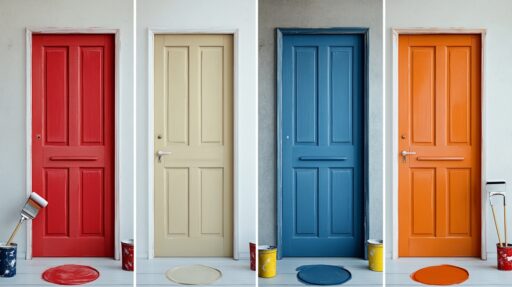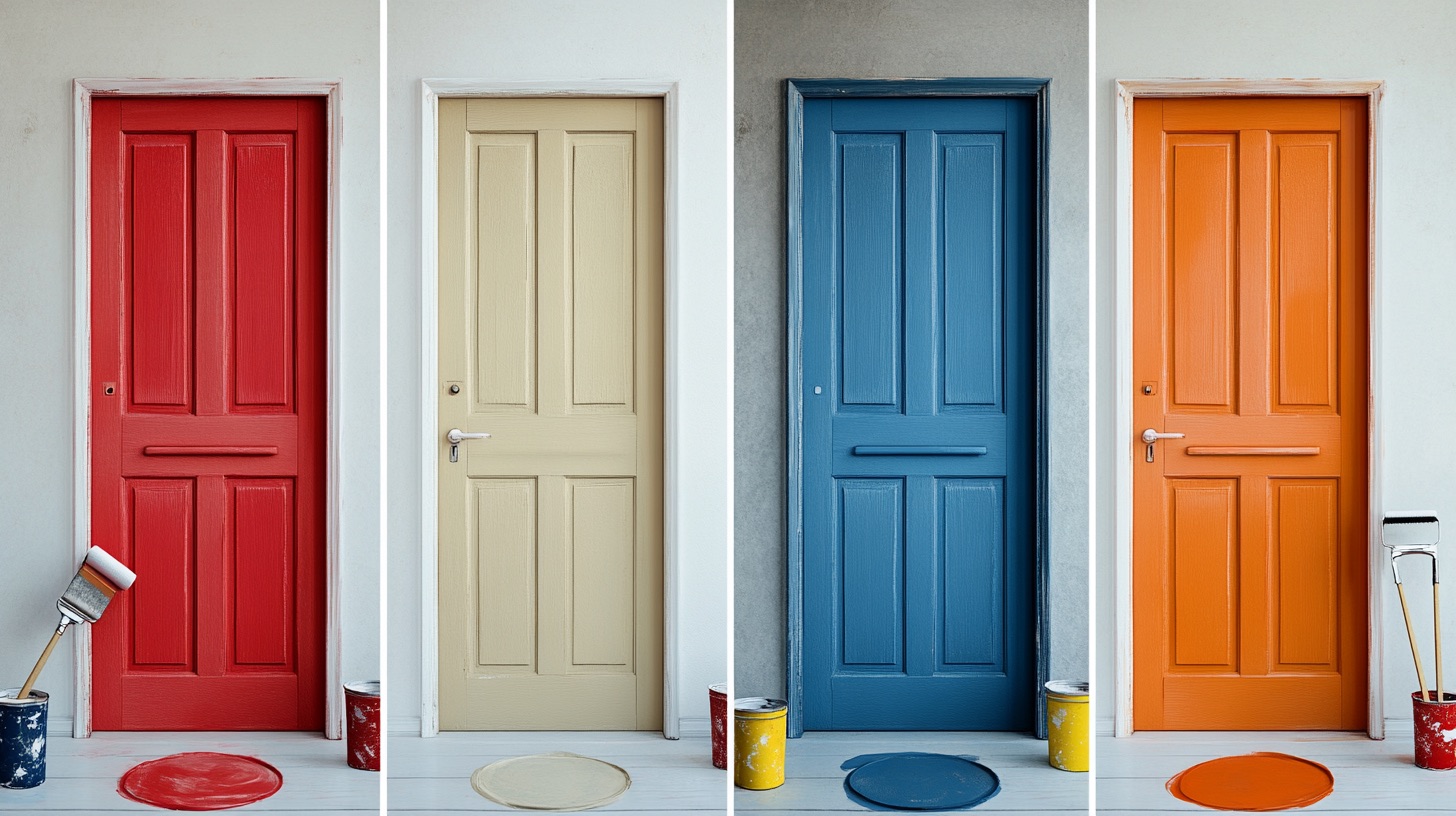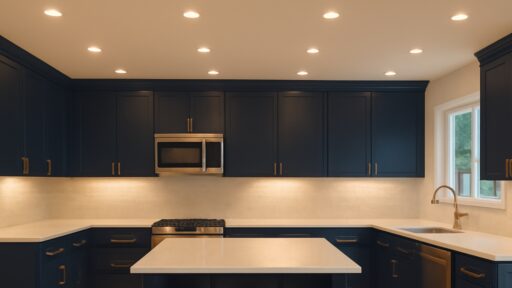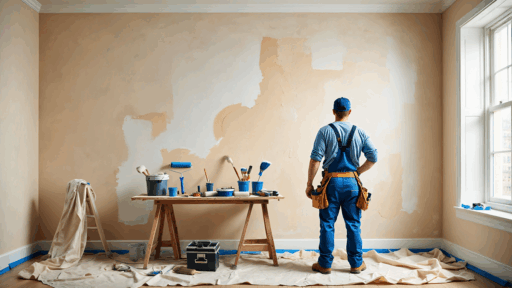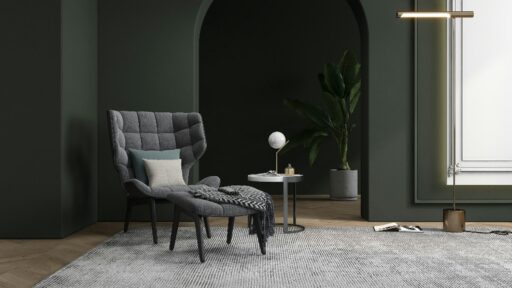Interior doors get touched hundreds of times each day.
People open them, close them, and also lean against them constantly.
Yet most homeowners barely think about door paint until the chips and scratches become obvious.
This oversight costs more than expected.
Fresh door paint changes how rooms connect and flow together.
Clean, well-painted doors make homes feel newer and more valuable.
Quality paint protects doors from daily wear while adding style that buyers notice during home sales.
Check out top paint brands, color psychology, application tips, and money-saving strategies.
Learn how to choose paints that last longer and look better.
Why Interior Door Paint Matters More Than You Think?
Ever notice how some homes feel instantly put-together while others seem unfinished?
The secret often lies in the doors! Most people ignore door paint, but it’s actually a game-changer for your home’s style.
Here’s the truth: Fresh door paint makes cheap doors look expensive, old doors look new, ties your room together, and makes doors easier to clean and more durable than bare wood.
Quick question: When did you last thoroughly inspect your door paint, because if it’s been years, you’re missing out on easy style points!
Color Psychology: How Paint Colors Influence Mood & Space
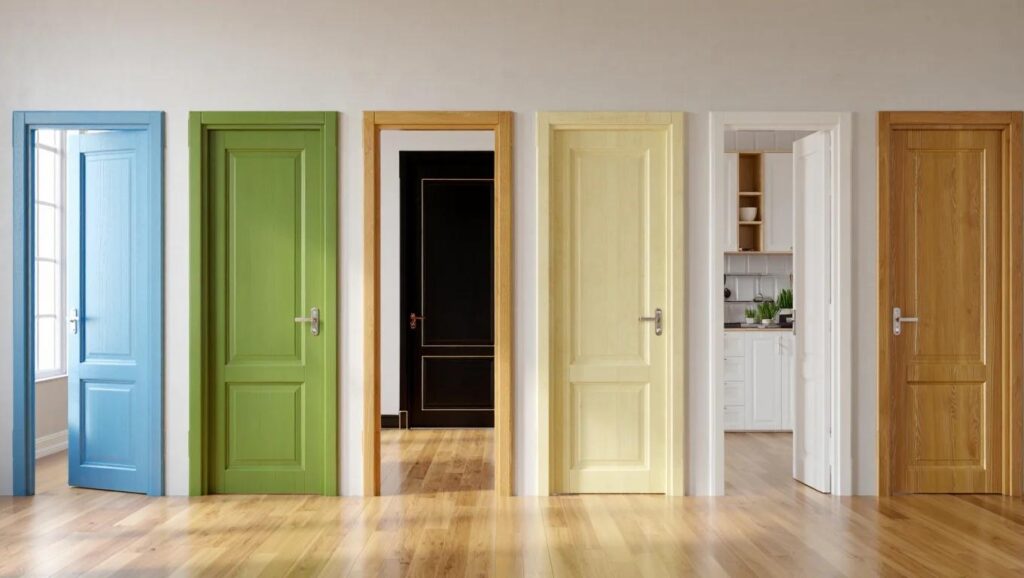
The color of a door can change how a room feels.
Light colors make small spaces look bigger.
Blue makes people feel calm, so it works well in bathrooms or bedrooms.
Green feels peaceful and is great for living rooms or family areas.
Black or dark colors make a space feel strong and fancy.
White or cream looks clean and fits with most home styles.
Bright colors can look fun, but they should match the rest of the room.
Brown or wood colors feel warm and cozy, which is nice for classic or cabin-style homes.
Modern homes often use white or light gray for a simple, neat look.
Old-style homes may pick colors that match the trim.
Picking the right door color makes rooms feel nicer.
But the wrong color can make a room feel small or uninviting.
Best Interior Door Paints Reviewed
Quality paint makes the most significant difference in how long door finishes last and how good they look over time.
High-End Options
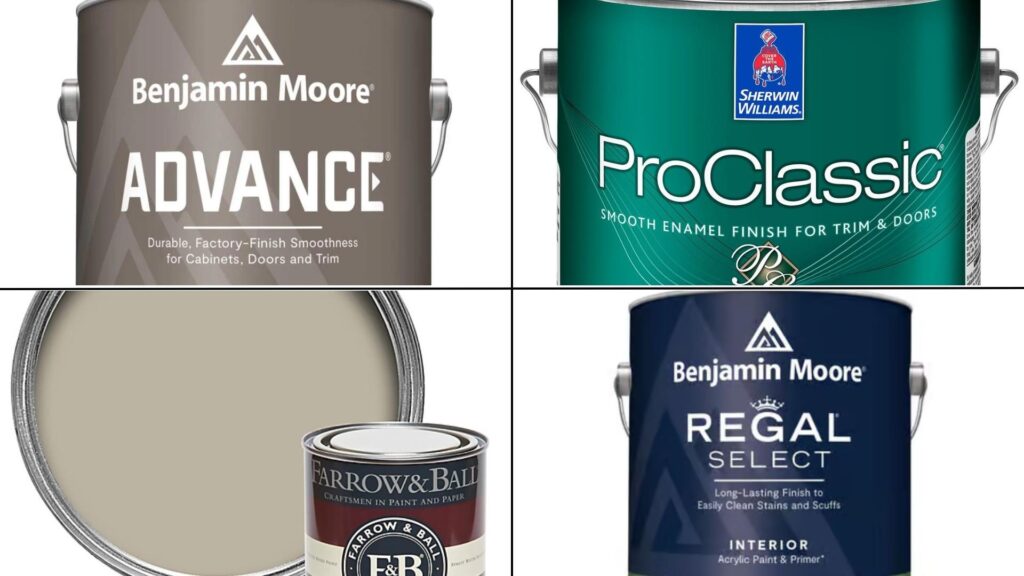
Here are some premium, high-end options to consider for your door.
1. Benjamin Moore Advance Interior Paint
This waterborne alkyd paint combines durability with smooth application.
Professional painters often choose Advance for trim and door projects because it levels well and resists marks.
- Type: Waterborne alkyd with satin, semi-gloss, and high-gloss finishes
- Dry time: 4-6 hours between coats, low VOC formula
- Surfaces: Excellent on wood, MDF, and composite doors
- User feedback: Praised for smooth finish and long-term durability despite higher cost
2. Sherwin-Williams ProClassic Interior Water-Based Acrylic-Alkyd
This hybrid paint delivers oil-like smoothness with water-based convenience.
It self-levels well and provides excellent coverage on doors and trim work.
- Type: Acrylic-alkyd hybrid in satin, semi-gloss, and gloss options
- Dry time: 2-4 hours, meets strict VOC standards
- Surfaces: Works on all door materials, including previously painted surfaces
- User feedback: Contractors love the smooth application and professional results
3. Farrow & Ball Estate Eggshell
This premium British paint offers unique colors and exceptional depth.
The eggshell finish provides a subtle sheen perfect for complete door treatments.
- Type: Water-based with signature eggshell finish and custom colors
- Dry time: 2-4 hours, environmentally friendly formulation
- Surfaces: Best on wood doors, requires careful surface preparation
- User feedback: Expensive but delivers unmatched color richness and depth
4. Benjamin Moore Regal Select Semi-Gloss
This premium latex paint offers excellent durability and stain resistance.
The semi-gloss finish cleans easily and works well in high-traffic areas.
- Type: 100% acrylic latex with semi-gloss and gloss finishes available
- Dry time: 1-2 hours, Greenguard certified for low emissions
- Surfaces: Suitable for all door types with proper priming
- User feedback: Homeowners appreciate easy cleanup and a long-lasting finish
5. Sherwin-Williams Duration Home Interior Acrylic Latex
This self-priming paint offers one-coat coverage in many situations.
The advanced formula resists stains and provides excellent color retention.
- Type: Self-priming acrylic latex in multiple sheen levels
- Dry time: 1-2 hours, advanced stain-blocking technology
- Surfaces: Bonds well to wood, MDF, and composite materials
- User feedback: DIYers like the one-coat coverage and easy application
Budget-Friendly Options
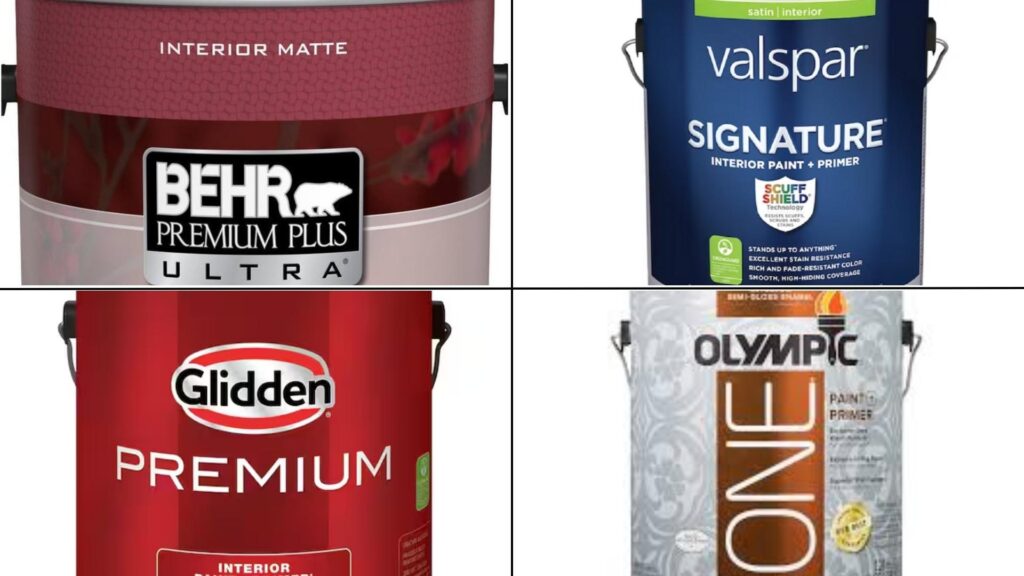
If you don’t want to go for premium paint, here are some budget-friendly options
1. Behr Premium Plus Ultra Interior Paint
This affordable option provides good coverage and durability for budget-conscious projects.
The paint and primer combination saves time and money.
- Type: Paint and primer in one, available in satin and semi-gloss
- Dry time: 1-2 hours, low VOC and low odor formula
- Surfaces: Works on most door materials with good adhesion
- User feedback: Good value for money with decent durability and coverage
2. Valspar Signature Interior Paint
This mid-range paint offers solid performance at reasonable prices.
The advanced formula provides good stain resistance and color retention.
- Type: 100% acrylic latex with multiple finish options
- Dry time: 2-4 hours, meets environmental standards
- Surfaces: Suitable for wood and composite doors
- User feedback: Reliable performance with good coverage and smooth application
3. Glidden Premium Interior Paint
This budget-friendly choice works well for light-duty door painting projects.
The paint provides basic protection and a decent appearance.
- Type: Latex paint with satin and semi-gloss finishes
- Dry time: 2-4 hours, standard VOC levels
- Surfaces: Best on previously painted or primed surfaces
- User feedback: Adequate for low-traffic doors but may need more frequent touch-ups
4. Olympic One Interior Paint
This affordable paint offers decent coverage and durability for everyday use.
Although the company is no longer in operation, its products are still being sold.
It’s designed for high-traffic areas and resists stains and scuffs reasonably well for its price.
- Type: Acrylic latex paint with satin and semi-gloss finishes
- Dry time: 1–2 hours to touch, recoat in 4 hours
- Surfaces: Ideal for wood and composite doors with proper priming
- User feedback: Budget-friendly option praised for good coverage and easy cleanup, though it may require two coats for rich color
5. Kilz Tribute Interior Paint
This economical paint offers basic protection and coverage for budget renovations.
The paint and primer formula helps save preparation time.
- Type: Paint and primer combination in satin and eggshell finishes
- Dry time: 1-2 hours, low VOC formulation
- Surfaces: Adequate for most door materials with proper surface prep
- User feedback: Very affordable, but may need additional coats for full coverage
What People Are Saying?

Community forums, such as Reddit, provide a behind-the-scenes glimpse into how real people feel about painting interior doors and what works best for them in their own experiences.
The homeowner wanted help picking door colors that looked nice with wood trim and their black, white, and leather color scheme.
Commenters shared tips like painting doors black for bold contrast or using soft colors like smoky blue or cream with wood.
Some said to paint both trim and doors white for a cleaner look, since mixed wood tones might clash and feel too messy.
The homeowner later shared they painted some doors white and started changing the trim to white too, slowly fixing it all.
Overall, the group suggested picking door colors that match your room style, trim, and wall colors, or add bold color pops.
If you’re unsure about door colors or trim choices, you might find it helpful to join the conversation.
Types of Paint Explained
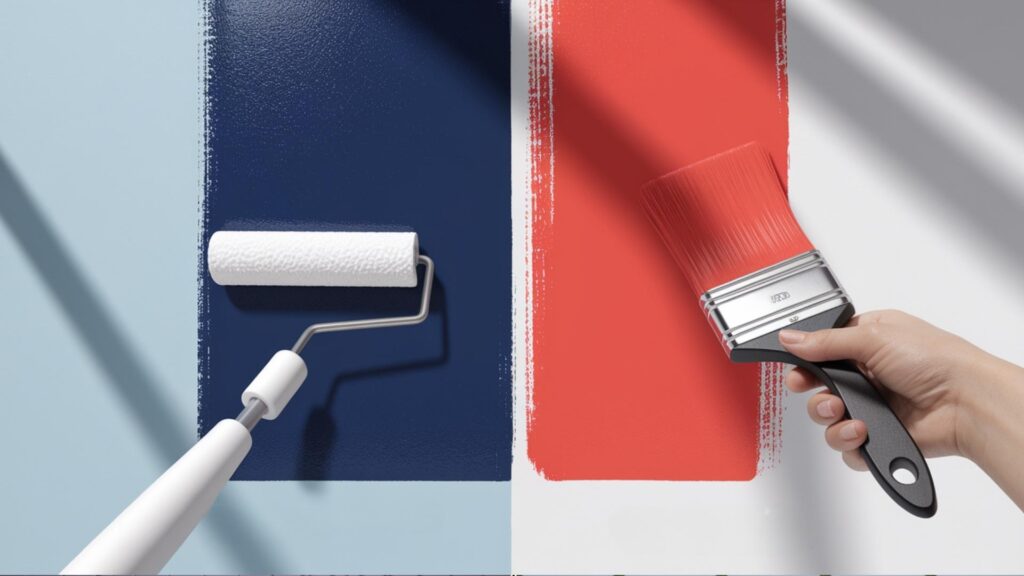
Knowing the paint type helps you pick the best one for your door.
Latex paint dries fast, smells less, and is easy to clean with water, but it may not last as long.
Oil-based paint gives a strong, smooth finish and hides brush marks well, but it smells strong and takes longer to dry.
Waterborne alkyd paint is like oil paint but cleans with water.
It is strong and smooth, but it costs more and takes longer to fully cure.
Latex works well for light-use doors.
Oil-based is better for busy areas or wood doors.
Waterborne alkyd is great if you want oil-like strength but need easy cleanup.
The best paint depends on the door’s material, how much traffic it gets, and how easy you want the cleanup to be.
Key Factors Before Painting Doors
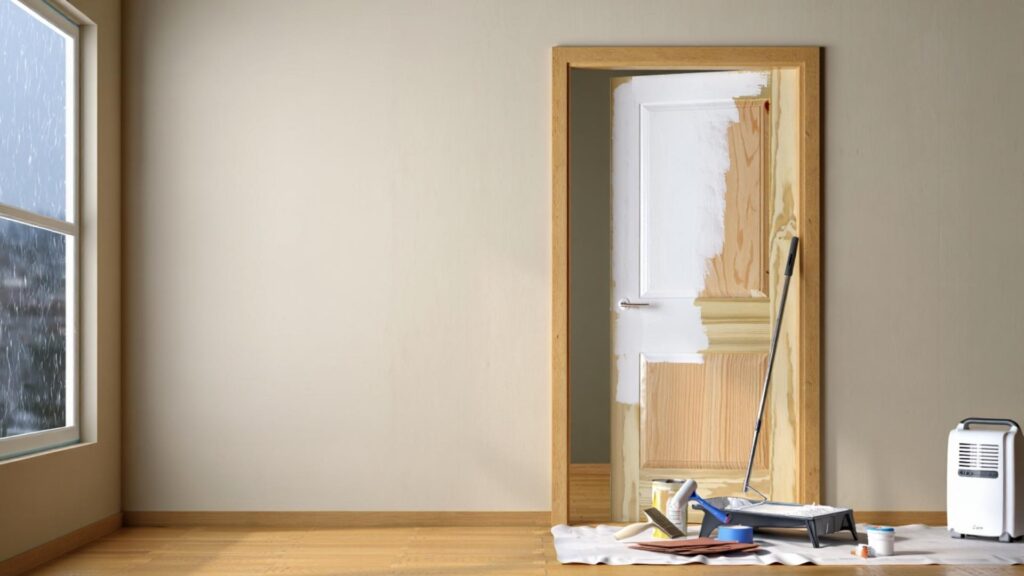
Before painting your interior doors, consider these essential factors to ensure lasting results and a smooth, professional-looking finish.
- Door material: Wood, MDF, and composite need different primers, prep steps, and paint types for proper adhesion.
- Location and traffic: High-use doors need durable finishes; lower-use doors can use softer sheens like satin or eggshell.
- Finish selection: Choose a sheen that balances durability and style; semi-gloss works well in most door applications.
- Humidity and climate: Use moisture-resistant paint in humid areas to prevent peeling, swelling, or mold growth.
- Existing paint condition: Damaged or dark surfaces need primer; clean, similar-color doors may skip this step.
- Door style: Flat doors are easy to paint; paneled doors require more care in corners and detailed sections.
Smart choices at this stage will save time, reduce touch-ups, and extend the life of your painted doors.
DIY Guide: How to Paint Interior Doors Like a Pro
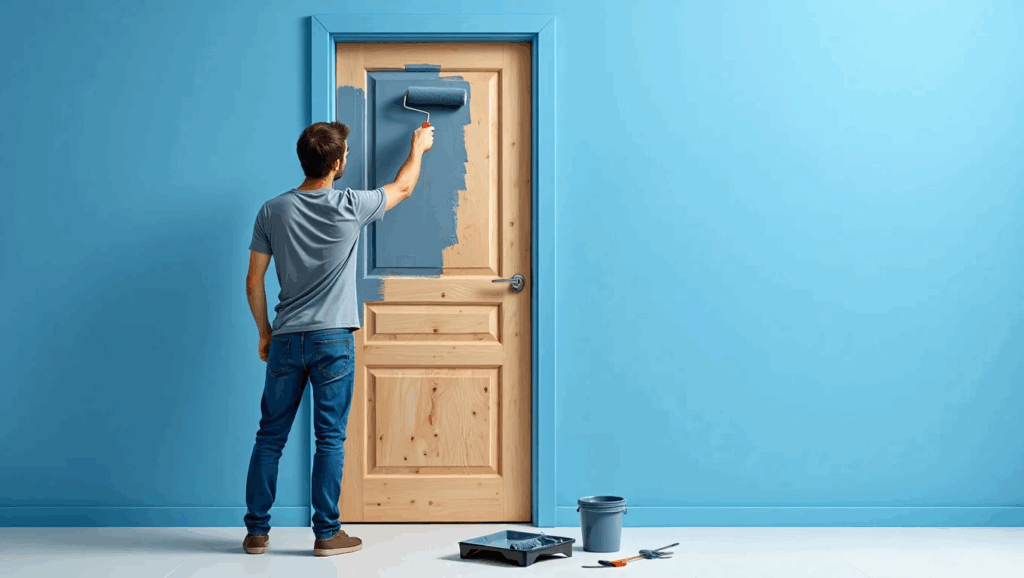
A freshly painted door can upgrade any room, and the process is easier than you think when you follow the basics.
Step 1: Prep Your Space and Door
Clear furniture from the area, lay down a drop cloth, clean the door with soapy water, and let it dry properly.
Lightly sand the surface to help the paint stick better, and wipe off the dust before moving on to the next step.
Step 2: Prime When Necessary
Use primer on bare wood, stained surfaces, or when changing from a dark to a light color for smoother coverage.
If the door is in good shape and the new color is similar to the old, you can safely skip this part.
Step 3: Paint in Order
Start with the detailed sections using a brush, then move to the flat areas with a roller or smooth strokes.
Always paint from top to bottom in even lines to avoid drips and ensure that the paint dries evenly without rough patches.
Step 4: Apply a Second Coat
After the first coat dries completely, repeat the same painting process with a second coat to improve color and finish quality.
This extra layer helps cover any missed spots and ensures the door looks smooth, polished, and fully covered once dried.
Step 5: Wrap It Up
Let the door dry thoroughly before handling it, then slowly peel off the painter’s tape without pulling off any fresh paint.
Carefully reattach the hardware, like knobs and hinges, and step back to admire your freshly painted door, looking clean and new.
Check out how to paint a door in full detail here.
Maintenance Tips for Door Paint Longevity
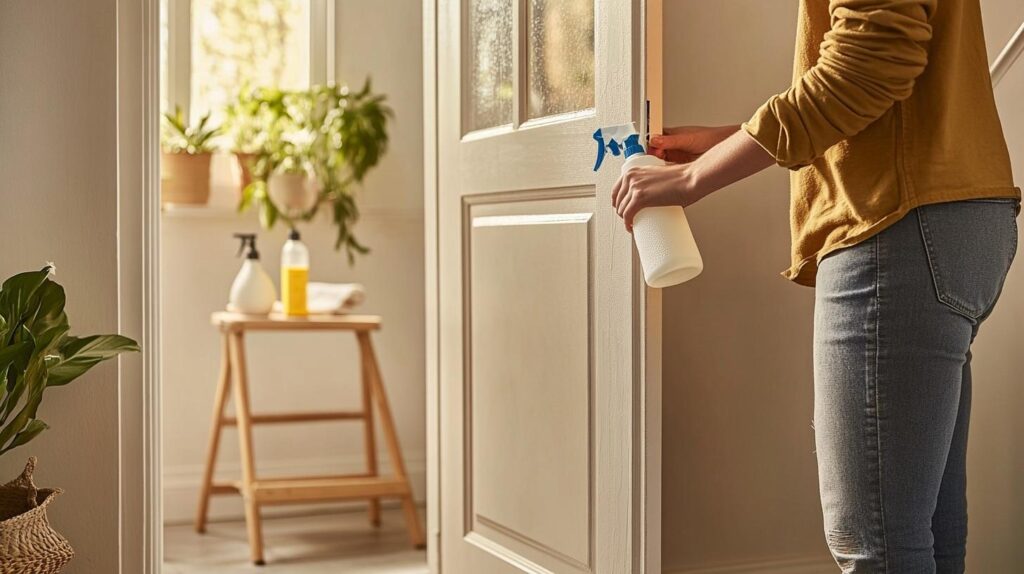
Proper maintenance extends paint life and keeps doors looking fresh between major repainting projects.
- Clean regularly: Use mild soap and water for most finishes, avoiding harsh chemicals that damage paint
- Avoid abrasives: Skip bleach, scouring powders, and rough sponges that scratch and dull paint surfaces
- Touch up promptly: Small chips and scratches spread quickly if left unrepaired
- Plan repainting cycles: High-traffic doors typically need repainting every 2-3 years, depending on use
- Protect from damage: Use door stops and furniture pads to prevent dents and scratches
- Control humidity: Excessive moisture causes paint to peel and doors to warp over time
- Handle gently: Train family members to avoid slamming doors or hanging items on door surfaces.
Regular attention to door paint condition prevents small problems from becoming expensive repairs while maintaining home appearance and value.
Wrapping It Up
Quality paint and thoughtful color selection significantly impact a home’s appearance more than most people realize.
The right paint protects doors from daily wear while creating visual connections between rooms that make spaces feel larger and more coordinated.
Regular maintenance keeps doors looking fresh and prevents costly repairs or premature repainting projects.
Professional-quality results are achieved by understanding door materials, selecting the proper paint formulations, and following proven application techniques.
Investing in high-quality paint pays dividends through a better appearance, easier maintenance, and higher resale values.
Have a go-to paint or technique for doors? Share your favorite brand or trick below!
Don’t forget to explore our home improvement guides for more smart upgrades that brighten every corner of your home!

